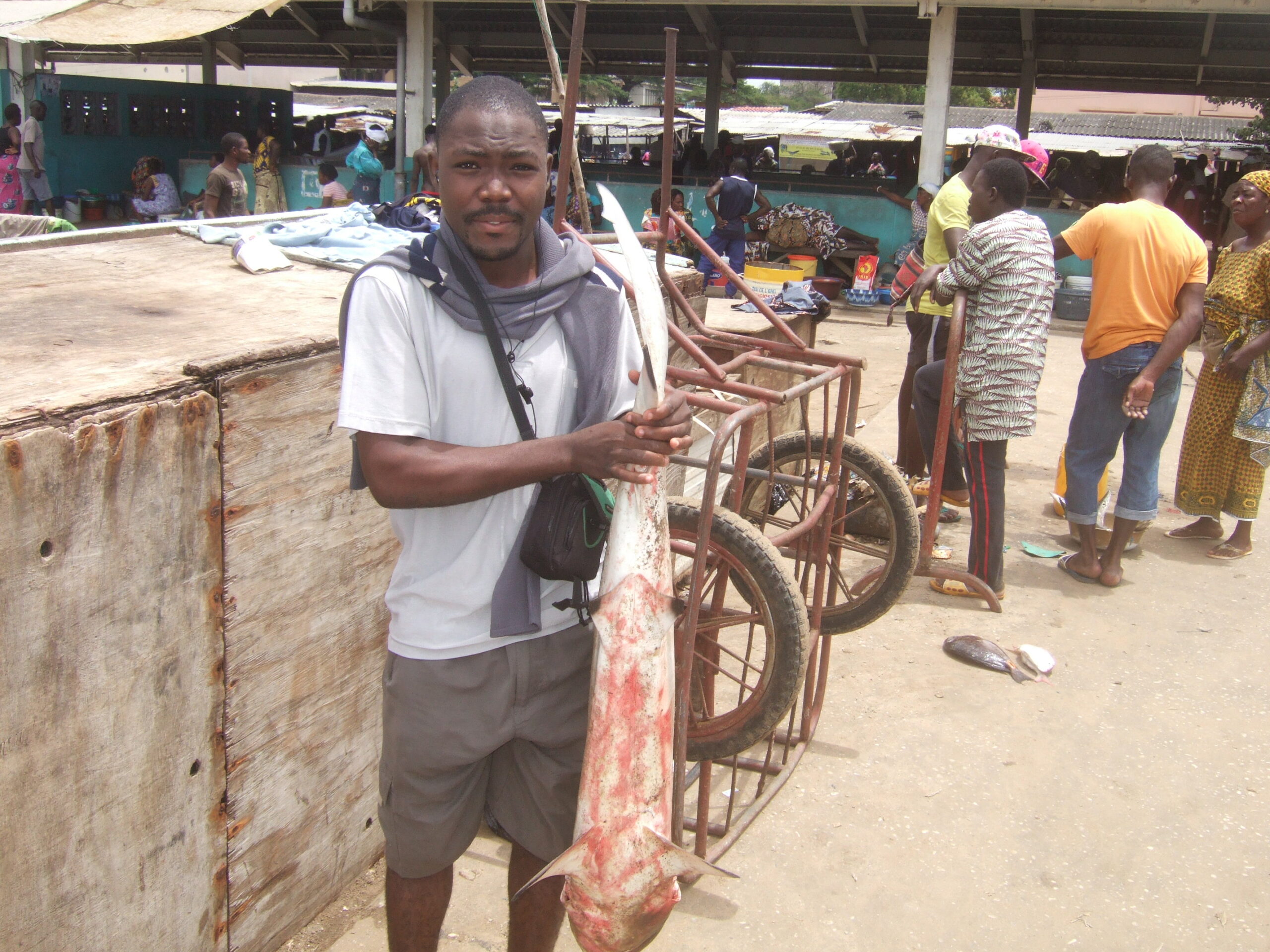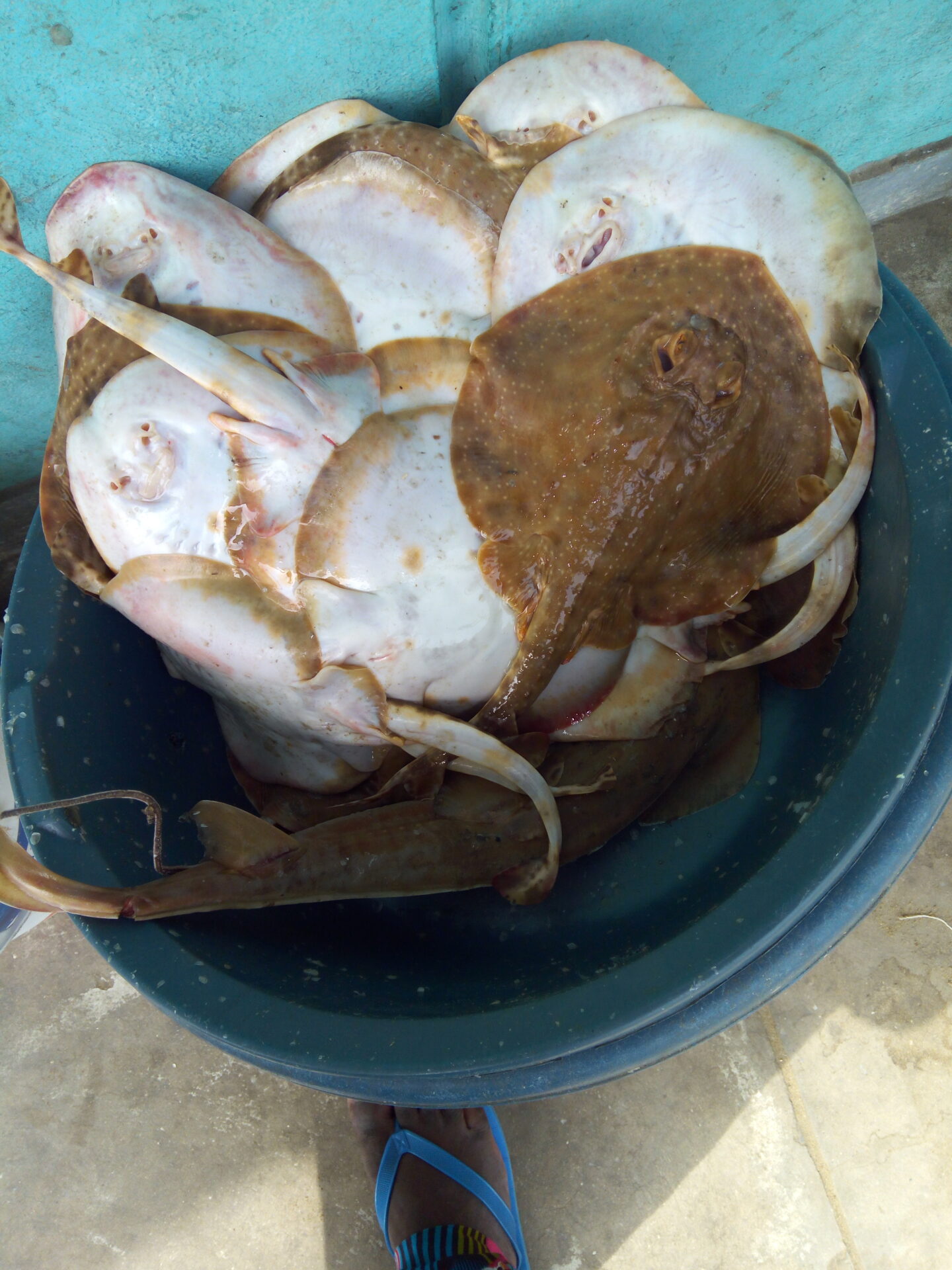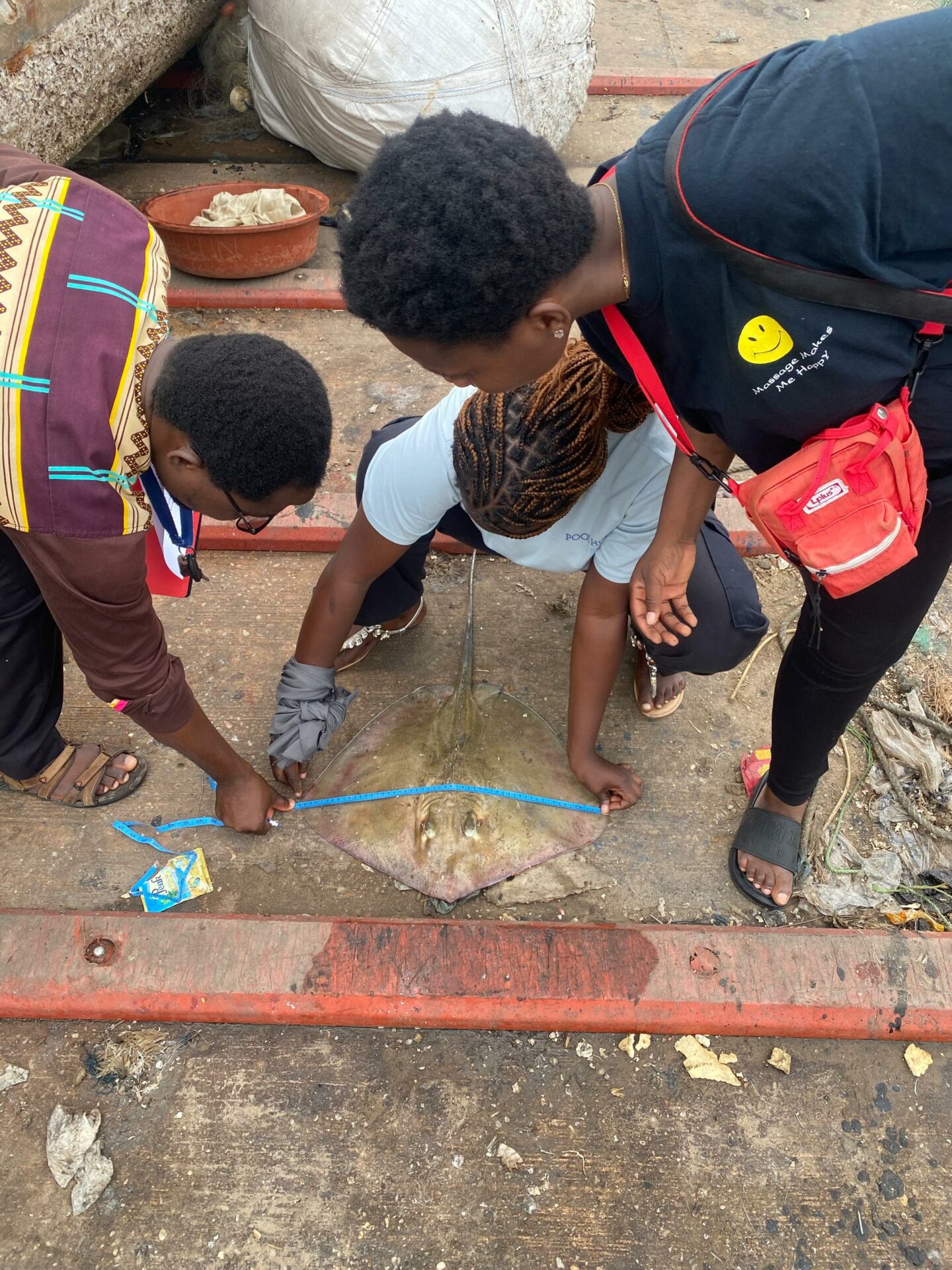From passion to research: my elasmobranch odyssey
I am Houangninan Midinoudewa, a fisheries biologist from Benin with a keen interest in elasmobranchs. My passion for these species ignited during my childhood after watching a documentary on the National Broadcasting Office’s television at the end of the 1990s. Once I entered university, I enrolled in environmental sciences and graduated with a degree in natural resource management, focusing on sharks and their relatives. Over the past fourteen years, sharks and their relatives have played a significant role in my life, both academically and personally, often overshadowing my training in broader biological diversity.

Project leader holding a specimen of Carcharhinus limbatus. Photo © Houangninan Midinoudewa
This passion has driven me to study various aspects of these majestic species, ranging from their diversity in the marine waters of Benin to their population connectivity in the West African ocean (the Gulf of Guinea). My research also encompass the structure of their population in terms of the number of young-of-year, immature individuals, mature individuals, and their fertility. The research includes the exploitation parameters in terms of mortality by fishing per year, the infinite length that the species could reach if it keeps growing until it natural death, as well as the stomach contents of sharks.
As a Ph.D. candidate, I have spent the last four years investigating the chemistry of vertebrae and muscle in four shark species, inferring the pollution status of the West African ocean from trace elements found in their tissues. This work has been transdisciplinary, employing the chemical composition of their environment reflected in their muscle and vertebrae, taxonomic, and genomic methods.
The current project I am leading in Benin originated from a request made by Dr. Bernard Séret in 2016 after he described Zanobatus maculatus, a species that inhabits only the Gulf of Guinea. The observed trend over the past ten years, characterised by low catches and the dominance of the blue shark, further inspired this project. Additionally, this initiative builds upon my recent contributions to the upcoming global report on the status of sharks and rays coordinated by Dr. Rima Jabado.

Individuals of Zanobatus maculatus at the artisanal fisheries harbour of Cotonou, Photo © Houangninan Midinoudewa
My project aims to evaluate and provide a national red list for sharks and rays. It intends to inform the management of elasmobranchs in the country, particularly within the two newly established Marine Protected Areas located within the first five nautical miles where the artisanal fishery operates. The project integrates socio-economic assessments, and the use of morphological description associated to the genomic techniques, and citizen science through the SIREN AMMCO app, a mobile application developed by the African Marine Mammal Conservation Organization (AMMCO) based in Cameroon. Finally, we are committed to training new elasmobranch scientists and draw attention of the little ones through education materials, translated from English to French or original text adapted to their level of comprehension.

Students applying a ribbon metre to take Hypanus rudis disc width with the project leader’s help. Photo © Houangninan Midinoudewa
